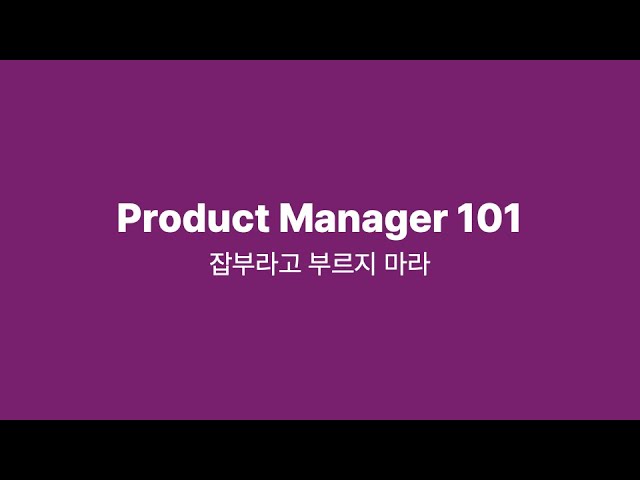A learning challenge posed by the entire nation's Q&A TL;DR This reorganization represents a major clash between the differing perspectives of general users and IT makers . Both perspectives must be considered together . The public judges things as "if it's uncomfortable, don't use it; if it's comfortable, use it," but the industry must thoroughly investigate why these decisions were made and what lessons can be learned . The Toss origins and advertising media are more like ingredients than the starting point of these problems. This event was essentially a massive user test targeting the entire nation , and the data and experiences gained from it became key insights for future product decisions . If you're not in the IT industry, you might simply dismiss this as news, but if you are, consider it. https://youtu.be/KSR3h8Pd5-I?si=rhMgDNesm1oY0FwF The recent large-scale reorganization of KakaoTalk has sparked much debate. I define this reorganization as a "national QA (quality assurance)" and see it as a significant event with much to learn from IT professionals. Beyond simply expressing dissatisfaction among general users, I emphasize the need for an in-depth analysis of the impact of this reorganization on Korean society and the IT industry. KakaoTalk has declared itself a "national messenger" and attempted such a drastic change because the service has become an integral part of our daily lives. Kakao is also aware that users cannot easily switch to alternatives, and this has created a dilemma where users have no choice but to continue using the service despite their dissatisfaction. The Challenges of Short-Form Adoption: User Experience and Platform Nature The introduction of the "short-form" feature has been particularly controversial in this reorganization. I argue that short-form content forces customers into experiences they don't want . Unlike platforms like YouTube, Instagram, and TikTok, which are primarily focused on content consumption, KakaoTalk open chatrooms are primarily spaces for information exchange and communication, and the problem is that Showform is placed in an auto-play mode. A bigger problem with the introduction of Showform is that it grants content uploading authority only to a select few influencers . This is similar to the failure of Naver's "Me2day" in the past due to preferential treatment given to celebrity accounts, critics say. They emphasize that the essence of social media is "connection" and providing exposure opportunities to everyone , but KakaoTalk has forgotten this and has adopted a "violent" approach that only gives opportunities to a select few. Understanding Advertising Revenue Models and the Economic Situation In response to criticisms about the increased advertising, the speaker emphasizes that most platform companies fundamentally generate revenue through advertising . While securing advertising space is a natural strategy, market conditions are crucial. He analyzes that simply increasing advertising space won't lead to explosive sales growth, as marketing costs shrink in difficult economic times. He also mentions models like YouTube Premium, where users pay to avoid ads, and questions whether KakaoTalk provides enough value for users to be willing to pay for it . Given the failures of various content initiatives in the past, such as Kakao TV and Kakao Music, he argues that providing new value beyond advertising is crucial. Kakao's sense of crisis and decision-making problems Kakao's recent reorganization was driven by a sense of crisis about technological change and the flow of the times . The explanation is that amidst the rapid rise of AI technologies like ChatGPT, Kakao likely felt it was failing to demonstrate its new value as a "technology company" to users. This sense of crisis likely served as a catalyst for change, much like the "determination to save the nation." The author believes that despite the catchphrase for this reorganization being "customized," the original intent wasn't properly conveyed due to features like Showform . While some useful features, such as folder management and splitting PC KakaoTalk open chats, have been added, they haven't received much attention due to the negative experiences with Showform. The Truth and Falsehood of Blind Criticism: The Dangers of Personal Blame The speaker expresses concern about the torrent of criticism directed at the CPO and team, who hail from Toss, on Blind. He emphasizes that no product is released solely through the decisions of one or two individuals , but rather involves numerous processes and team efforts. He also points out that the term "Kamuwon" (카무원) is not a neologism coined by Toss alumni, but rather has long been used self-deprecatingly within large corporations. He criticizes the culture of "demonizing" and harassing specific individuals as reminiscent of the violent culture in the gaming industry . While the satire of game directors was directed at those with absolute power, like "kings," the current criticism of the CPO goes beyond mere satire and borders on unjustified personal attacks. He argues that such personal attacks hinder constructive discussion and hinder progress. He also cautions against automatically accepting insider comments as truth , citing the difficulty in verifying whether the writer of a Blind post is an actual IT product expert . He adds that just as increased ad exposure doesn't necessarily translate into increased sales, it's important to understand that there are complex development roadmaps where user dissatisfaction doesn't necessarily lead to immediate rollbacks. Lack of communication about change and future direction I point out that one of the biggest problems with the recent KakaoTalk reorganization is the lack of user communication about the changes . Global services like Instagram, TikTok, and WhatsApp explain the context and rationale behind updates in detail, disclose their release roadmaps in advance, and persuade users. In contrast, KakaoTalk unilaterally pushed through updates with claims like, " It's changed now, " leading to confusion and backlash. I also cite Naver's past experience with major reorganizations, which faced significant user backlash, but ultimately accepted and implemented the changes, emphasizing that change always comes with inconvenience . However, I acknowledge that Kakao's recent reorganization was overly aggressive and compromised core functionality, a clear mistake. I suggest that Kakao should learn from this incident by adopting a user-centric roadmap disclosure and a phased update approach . Similar to the gaming industry, it needs to incorporate sensitive user feedback, conduct pre-launch testing, and explain the context of the changes. While Kakao may have hesitated to communicate due to its past failure to deliver on promises, I analyze that this ultimately led to greater backlash. In conclusion, I believe this major reorganization of KakaoTalk is a significant opportunity that can serve as a lesson not only for Kakao but also for the entire IT industry . I urge everyone to go beyond mere criticism and reflect on why this outcome occurred and move forward in a constructive manner. I emphasize that while criticizing others is easy, solving real problems is much more difficult.
































